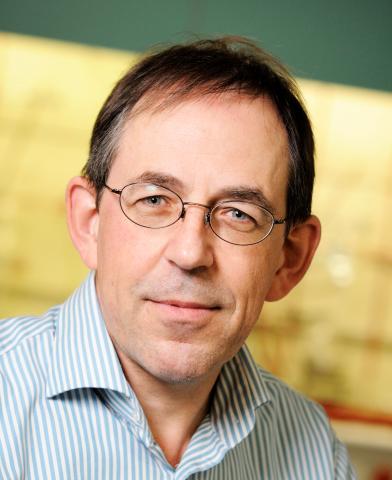event
Georgia Tech-COPE Distinguished Lecture Series - René Janssen
Primary tabs
The Georgia Tech-COPE Distinguished Lecture Series welcomes Dr. René Janssen, professor in chemistry and physics at the Eindhoven University of Technology. Dr. Janssen will present a lecture entitled, "Efficient Polymer Solar Cells", on January 25, 2013 in Room G011 of the Molecular Science and Engineering Building (MoSE). While the event is free, please take the time to RSVP here.
"Efficient Polymer Solar Cells"
The power conversion efficiency of organic solar cells depends on the quantum and energy efficiency by which photons from the sun are converted into electrical power. Absorption of light, charge generation, transport and collection all have to occur with high quantum efficiency and with minimal losses in energy. For this the nature of the materials used in the absorber layers is crucial. In a single junction cell, i.e. a cell with one absorber layer, a substantial part of the solar energy is lost by thermalization and transmission losses. In a multi-junction solar cell, i.e. a cell with two or more layers, the photon energy can be better preserved. Hence, these multi-junction form a promising and viable strategy to further increase the power conversion efficiency of polymer solar cells.
The lecture will discuss the recent progress in our group on making new material and device architectures for polymer solar cells. For single junctions the best cells have reached 7.4%, while for tandems a power conversion efficiency of 8.3% has been obtained. The tandem cell uses a newly developed efficient small band gap polymer semiconductor in combination with an efficient wide band gap polymer, and employs a hybrid metal oxide – conducting polymer recombination layer to couple the two subcells electrically and optically with a spectral coverage up to 1000 nm. At 8.3% efficiency, the tandem polymer solar cell performs 30-40% better than each of the corresponding single junction solar cells that give 6.2 and 5.8%, respectively.
A more fundamental question in the operation of organic solar cells is the mechanism of free charge carrier generation. In organic bulk heterojunction solar cells, photoinduced electron transfer between donor and acceptor molecules or polymers populated a charge transfer (CT) state at the donor-acceptor interface. The residual electrostatic binding energy between electron and hole in the CT state may be considerable. Despite the poor screening of the Coulomb potential, free charges are often created efficiently. The mechanism by which the energy barrier for charge separation from the CT state is overcome within the short lifetime is presently not clearly understood. We have investigated the influence of excess energy, i.e. the difference between photon energy and the CT-state energy, on charge separation and recombination processes in a variety of conjugated polymer:fullerene blends by employing external quantum efficiency (EQE) measurements as function of photon energy and applied bias voltage and by a kinetic Monte Carlo model. Surprisingly charge separation in good heterojunctions shows little dependence on temperature or electric field. Monte Carlo calculations demonstrate that the energetic disorder that is characteristic for organic semiconductors provides an internal energy reservoir that can be used to split the Coulombically bound electron-hole pair. The Monte Carlo simulations further suggest that it is possible to reach high dissociation yields at low energy loss, opening a route to high efficiency solar cells.
About René Janssen
René Janssen is full professor in chemistry and physics at the Eindhoven University of Technology (TU/e). He received his Ph.D. in 1987 from the TU/e for a thesis on electron spin resonance and quantum chemical calculations of organic radicals in single crystals.
The research of his group focuses on functional p-conjugated molecules, macromolecules, nanostructures, and materials that may find application in advanced technological applications. Synthetic organic and polymer chemistry are combined with advanced time-resolved optical spectroscopy, electrochemistry, morphological characterization and the preparation of prototype devices to accomplish these goals. In recent years many of the activities have concentrated on organic and polymer solar cells. He has co-authored more than 390 scientific papers in this field and has supervised 38 PhD students.
René Janssen has been visiting professor at the University of California Santa Barbara, the University of Angers and the University of Florida. In 2000 he was co-recipient of the René Descartes Prize from the European Commission for outstanding collaborative research. René Janssen received the 2010 Research Prize of The Royal Institute of Engineers in The Netherlands for his work on Materials for Sustainable Energy. He currently serves as editor of “Organic Electronics”.
Groups
Status
- Workflow Status:Published
- Created By:Jason Martin
- Created:08/29/2012
- Modified By:Fletcher Moore
- Modified:10/07/2016
Categories

